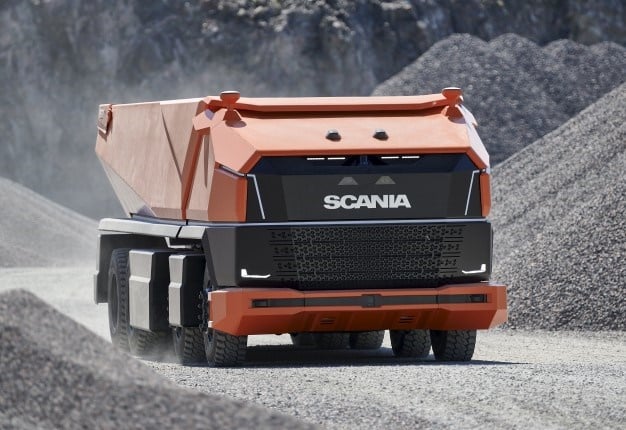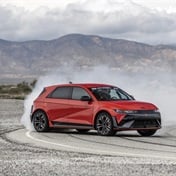
Autonomous vehicles have promised much, creating a huge expectation, but delivered little.
Established brands and new technology companies have all been furious attempting to engineering a shield of technology which can deliver consistent and safe autonomous vehicles.
Accidents, fatalities, and infrastructure realities have all mitigated against the development of autonomous private passenger vehicles. But now, one heavy vehicle brand might be ready to deliver a breakthrough.
Scania trucks, which is Swedish but owned by Volkswagen, has revealed its new AXL tipper truck. And it looks like nothing you’ve seen before.
Image: Supplied
The design is a dramatic departure from everything you’d associate with heavy transport. Scania has envisioned a driverless truck which has no capacity for occupants. Instead of the traditional truck cab superstructure, this Scania AXL features a sleeker appearance.
Although there is some semblance of a traditional grille, to channel airflow to the large turbodiesel engine, and LED lights to illuminate the road, farm or work yard, this Scania looks like something from 2040.
Testing autonomous vehicles where it is safest
Scania realised that some of its customers have complete control over their road infrastructure. Mining companies, construction crews, and quarries contain mostly sealed routes, where there is a lot less risk for traffic or pedestrian contingencies.
Programming an autonomous truck to function in this environment, is achievable with current technology. Unlike the challenge that traditional automakers are facing, by making cars anticipate every single possible issue in dense traffic or misbehaviour by pedestrians.
The Scania AXL gathers data about its driving environment from seven cameras, a laser, and radars. Without any human intervention possible, the AXL is a brave concept and Scania’s engineers have set substantially robust redundancy parameters for it, to avoid the truck possibly going ‘rogue’.
Image: Supplied
There are enormous benefits from not having to integrate a cab with the AXL’s design. It has a lower centre of gravity, for improved stability, and a far superior aerodynamic profile – which should compound to a noticeable fuel consumption saving.
Enhancing the AXL’s sustainability profile is a biodiesel compatible engine but the truck can visualise and understand its revolutionary environment.
Making a weatherproof autonomous vehicle
The AXL’s sensory systems are overbuilt, to ensure that if one camera or sensor fails, there is another part of the system which can easily execute its functions. This is a very important issue as autonomous driving engineers have discovered that small issues can disable a system: such as mud over a camera lens or overnight frost icing over a sensor.
Although Scania has admitted that the AXL is not yet street-smart, it will enable the company to gather vital data about how an autonomous driving vehicle operates in real-world conditions, albeit at very slow speeds.
In a world where many brands have promised to enable self-driving technologies, and not yet delivered, the simple truth is that any fully autonomous breakthrough will be piloted by the heavy transport industry – instead of a passenger vehicle brand.




 Publications
Publications
 Partners
Partners













